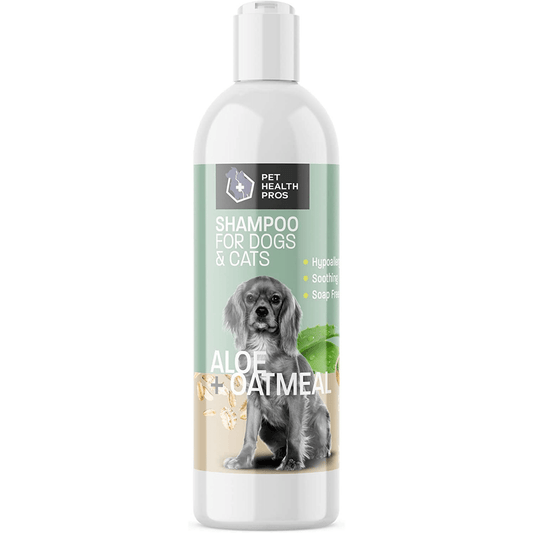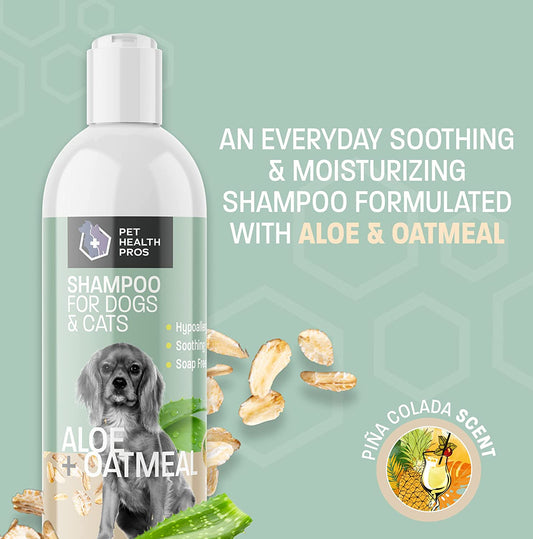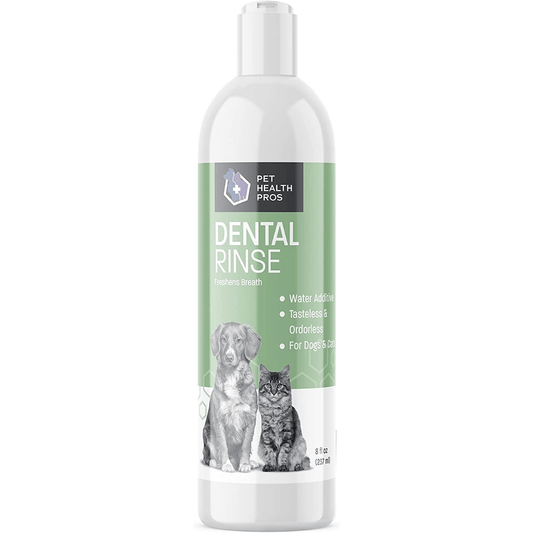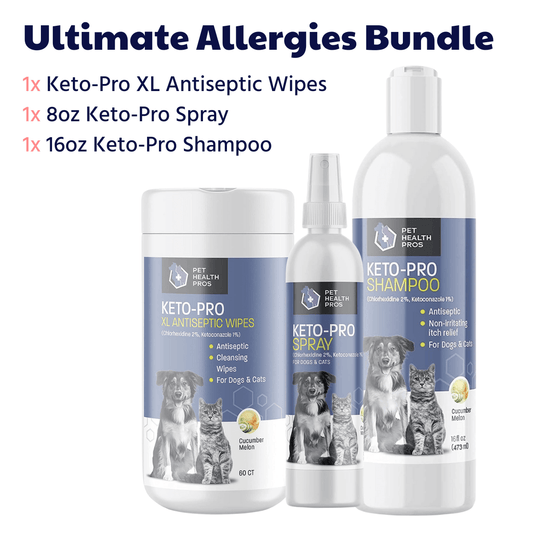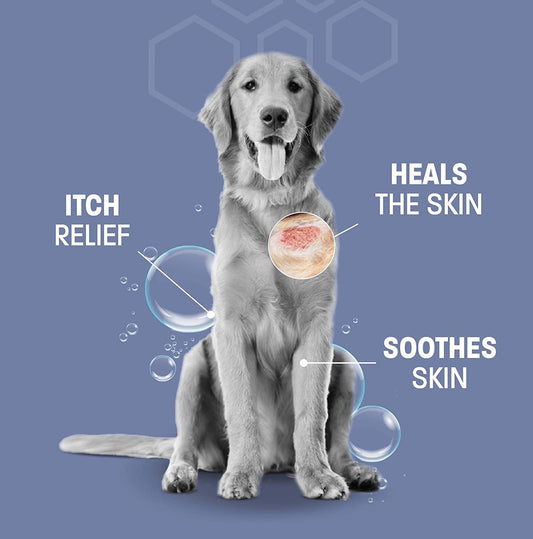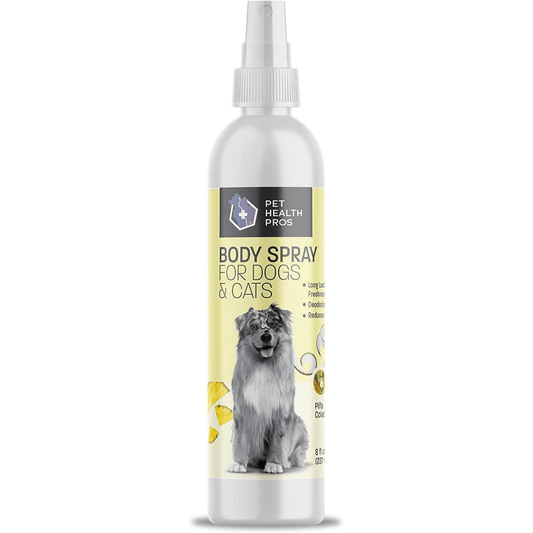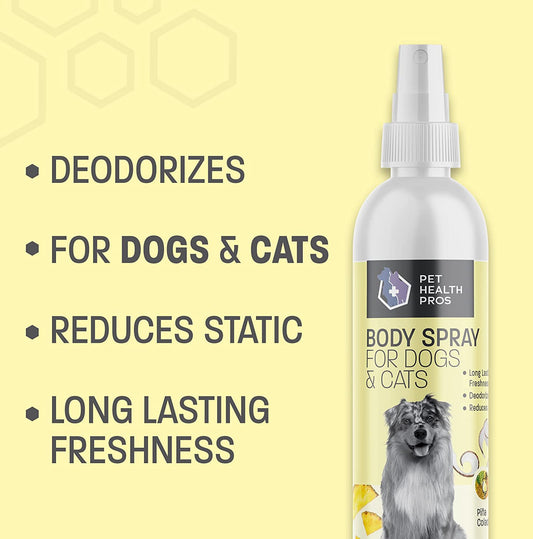Maintaining proper eye and ear hygiene is essential for the overall health and well-being of dogs. Regular cleaning of the eyes and ears can help prevent infections, remove dirt and debris, and identify any potential issues early on. One of the key tools in maintaining eye and ear hygiene for dogs is the use of eye and ear wipes. These specially formulated wipes are designed to effectively clean and soothe the delicate areas around the eyes and ears. When choosing the right eye and ear wipes for your dog, there are several factors to consider. Let's take a look at some key takeaways to keep in mind:
Key Takeaways
- Choose eye and ear wipes specifically designed for dogs.
- Look for wipes with gentle and non-irritating ingredients.
- Consider any sensitivities or allergies your dog may have.
- Follow proper instructions for using the wipes on your dog's eyes and ears.
- Establish a regular eye and ear cleaning routine to prevent infections and maintain overall hygiene.
Understanding the Importance of Eye and Ear Hygiene for Dogs
The Role of Eye and Ear Wipes in Maintaining Dog's Health
Eye and ear wipes play a crucial role in maintaining the health of dogs. These wipes are specifically designed to clean and protect the delicate areas around the eyes and ears, which are prone to dirt, debris, and bacteria buildup. Regular use of eye and ear wipes can help prevent infections, reduce irritation, and promote overall hygiene. It is important to choose high-quality wipes that are gentle, non-irritating, and formulated specifically for dogs.
Common Eye and Ear Problems in Dogs
Dogs can experience a variety of eye and ear problems that can affect their overall health and well-being. It is important for dog owners to be aware of these common issues and take steps to prevent and treat them. Some common eye problems in dogs include conjunctivitis, corneal ulcers, and dry eye. These conditions can cause redness, discharge, and discomfort in the eyes. Ear problems in dogs can range from ear infections to ear mites and wax buildup. These issues can lead to itching, odor, and pain in the ears.
Factors to Consider When Choosing Eye and Ear Wipes for Dogs
When choosing eye and ear wipes for dogs, there are several important factors to consider. First, it is crucial to select wipes that are specifically designed for dogs. Using human wipes or other products not intended for dogs can cause irritation and harm to their sensitive eyes and ears. Look for wipes that are formulated with gentle and non-irritating ingredients to ensure the safety and comfort of your dog. Additionally, consider the size of the wipes. Smaller wipes may be more convenient for cleaning the delicate areas around the eyes and ears, while larger wipes may be better suited for larger breeds or dogs with longer fur. Finally, check the packaging for information on the effectiveness of the wipes in removing dirt, debris, and excess moisture. Opt for wipes that are effective in removing these substances to maintain the hygiene of your dog's eyes and ears.
Choosing the Right Eye Wipes for Dogs
Understanding the Different Types of Eye Wipes
When it comes to choosing the right eye wipes for your dog, it's important to understand the different types available. Eye wipes can vary in their composition and purpose, so selecting the most suitable option for your dog's needs is crucial. Here are some key factors to consider:
Ingredients to Look for in Eye Wipes
When choosing eye wipes for your dog, it's important to look for certain ingredients that are safe and effective. Chamomile is a common ingredient in eye wipes and is known for its soothing properties. It can help reduce inflammation and irritation in your dog's eyes. Another important ingredient to look for is witch hazel, which has astringent properties and can help clean and disinfect the eyes. Aloe vera is also beneficial as it can moisturize and soothe the delicate skin around the eyes. Lastly, saline solution is often included in eye wipes to help flush out debris and keep the eyes clean.
Considerations for Dogs with Sensitivity or Allergies
When choosing eye wipes for dogs with sensitivity or allergies, it is important to look for gentle and hypoallergenic options. These wipes should be free from harsh chemicals and fragrances that can irritate the eyes. Additionally, consider natural ingredients such as chamomile or aloe vera, which can help soothe and calm the sensitive skin around the eyes. It is also advisable to consult with a veterinarian to determine the underlying cause of the sensitivity or allergies and to get recommendations on suitable eye wipes for your dog.
Tips for Properly Using Eye Wipes on Dogs
When using eye wipes on dogs, it is important to follow these tips to ensure proper usage and effectiveness:
- Gently hold your dog's head to prevent sudden movements and make it easier to clean their eyes.
- Avoid applying excessive pressure when wiping the eyes to prevent discomfort or injury.
- Start from the inner corner of the eye and wipe outward to remove any debris or discharge.
- Use a separate wipe for each eye to prevent the spread of any potential infections.
- If your dog shows signs of irritation or discomfort during the process, stop immediately and consult a veterinarian.
Remember, regular eye cleaning with the appropriate wipes can help maintain your dog's eye health and prevent potential infections.
Choosing the Right Ear Wipes for Dogs
Understanding the Different Types of Ear Wipes
When it comes to choosing the right ear wipes for your dog, it's important to understand the different types available. Ear wipes come in various formulations, each designed to address specific needs. Here are some common types of ear wipes:
Ingredients to Look for in Ear Wipes
When choosing ear wipes for your dog, it's important to look for certain ingredients that can help effectively clean and maintain ear health. Here are some key ingredients to consider:
- Salicylic Acid: This ingredient helps to remove dirt, debris, and excess wax from the ear canal.
- Aloe Vera: Aloe vera has soothing properties that can help alleviate irritation and inflammation in the ears.
- Chlorhexidine: Chlorhexidine is an antiseptic agent that can help prevent bacterial and fungal infections.
- Glycerin: Glycerin helps to moisturize and hydrate the ear canal, preventing dryness and discomfort.
It's important to note that different dogs may have different sensitivities and allergies, so it's always a good idea to consult with your veterinarian before using any ear wipes on your dog.
Considerations for Dogs with Ear Infections or Irritations
When choosing ear wipes for dogs with ear infections or irritations, there are a few important considerations to keep in mind:
-
Gentle and Soothing Ingredients: Look for ear wipes that contain gentle and soothing ingredients such as aloe vera or chamomile. These ingredients can help calm and soothe the irritated ears.
-
Antibacterial Properties: Ear infections are often caused by bacteria, so it's important to choose ear wipes that have antibacterial properties. Ingredients like tea tree oil or witch hazel can help kill bacteria and prevent further infections.
-
Non-Irritating Formulation: Dogs with ear infections or irritations may have sensitive ears, so it's crucial to choose ear wipes that have a non-irritating formulation. Avoid wipes that contain harsh chemicals or fragrances that could further irritate the ears.
-
Consult Your Veterinarian: If your dog has a persistent ear infection or irritation, it's always best to consult your veterinarian. They can provide guidance on the best ear wipes to use and may recommend additional treatments or medications.
Remember, proper ear hygiene is essential for your dog's overall health and well-being. By choosing the right ear wipes and following proper cleaning techniques, you can help prevent and manage ear infections and irritations.
Tips for Properly Using Ear Wipes on Dogs
When using ear wipes on dogs, it is important to follow these tips to ensure proper and effective cleaning:
- Gently hold your dog's head still to prevent any sudden movements.
- Carefully lift the ear flap and gently wipe the inside of the ear, avoiding the ear canal.
- Use a fresh wipe for each ear to prevent the spread of bacteria.
- If your dog has sensitive ears, look for ear wipes that are specifically formulated for dogs with sensitivity or allergies.
- Avoid using cotton swabs or any other objects inside the ear canal, as this can cause injury.
- If you notice any redness, swelling, or discharge in your dog's ears, consult a veterinarian for further evaluation.
Remember, regular ear cleaning is an important part of maintaining your dog's overall health and preventing ear infections.
Best Practices for Eye and Ear Hygiene in Dogs
Establishing a Regular Eye and Ear Cleaning Routine
Regular cleaning of your dog's eyes and ears is essential for maintaining their overall health and preventing infections. Here are some important steps to follow when establishing a regular eye and ear cleaning routine for your dog:
- Start by gathering all the necessary supplies, including eye wipes, ear wipes, and a clean towel.
- Choose a quiet and comfortable area where you can easily access your dog's eyes and ears.
- Gently hold your dog's head and use a soft, damp cloth or eye wipe to clean around their eyes. Be careful not to touch the eyeball.
- For the ears, use a specialized ear wipe or a damp cloth to clean the outer part of the ear. Avoid inserting anything into the ear canal.
- If you notice any discharge, redness, or swelling in your dog's eyes or ears, consult your veterinarian for further evaluation.
Remember, regular eye and ear cleaning is an important part of your dog's hygiene routine and can help prevent discomfort and infections.
Signs of Eye and Ear Problems in Dogs
It's important for dog owners to be aware of the signs that indicate eye and ear problems in their pets. By recognizing these signs early on, you can seek appropriate treatment and prevent further complications. Some common signs of eye problems in dogs include excessive tearing, redness or inflammation, cloudiness or discharge, squinting or pawing at the eye, and changes in behavior or appetite. On the other hand, signs of ear problems in dogs may include head shaking or tilting, itching or scratching at the ears, foul odor or discharge, swelling or redness, and sensitivity to touch. If you notice any of these signs in your dog, it's important to consult a veterinarian for a proper diagnosis and treatment plan.
When to Consult a Veterinarian
If you notice any persistent or concerning symptoms in your dog's eyes or ears, it is important to consult a veterinarian. Some signs that may indicate a need for veterinary attention include excessive tearing, redness, swelling, discharge, itching, foul odor, or changes in behavior. These symptoms could be indicative of an underlying eye or ear infection, injury, or other health issue. A veterinarian will be able to properly diagnose the problem and recommend the appropriate treatment.
Preventing Eye and Ear Infections in Dogs
Preventing eye and ear infections in dogs is crucial for maintaining their overall health and well-being. Here are some important tips to help you keep your dog's eyes and ears healthy:
-
Regular Cleaning: Regularly clean your dog's eyes and ears to remove dirt, debris, and excess wax. Use a gentle, veterinarian-approved eye and ear wipe to ensure proper hygiene.
-
Avoid Irritants: Be mindful of potential irritants that can cause eye and ear infections in dogs. These include dust, pollen, chemicals, and excessive moisture. Keep your dog's environment clean and free from allergens.
-
Proper Technique: When cleaning your dog's eyes and ears, use gentle and careful motions. Avoid inserting anything deep into the ear canal to prevent injury. Follow the instructions provided by the eye and ear wipe manufacturer.
-
Regular Vet Check-ups: Schedule regular check-ups with your veterinarian to monitor your dog's eye and ear health. Your vet can detect any early signs of infection or other issues and provide appropriate treatment.
Remember, prevention is key when it comes to eye and ear infections in dogs. By following these tips and maintaining good hygiene practices, you can help keep your furry friend healthy and happy.
Maintaining proper eye and ear hygiene is essential for the overall health and well-being of your dog. At Pet Health Pros, we understand the importance of keeping your furry friend's eyes and ears clean and free from infections. That's why we offer a wide range of high-quality pet health supplies specifically designed for eye and ear care. Our products are made right here in the USA and are backed by a 100% satisfaction guarantee, so you can shop with confidence. Whether you need ear cleansers, eye drops, or grooming tools, we have everything you need to ensure your dog's eye and ear hygiene is top-notch. Visit Pet Health Pros today and give your dog the care they deserve!
Conclusion
In conclusion, choosing the right eye and ear wipes for dogs is essential for maintaining their overall health and well-being. By considering factors such as gentleness, effectiveness, and ingredients, dog owners can ensure that they are providing the best care for their furry friends. Regular cleaning of the eyes and ears can help prevent infections, reduce discomfort, and promote a happy and healthy life for dogs. Remember to consult with a veterinarian for specific recommendations and always follow the instructions provided by the manufacturer. With the right wipes, dog owners can keep their pets' eyes and ears clean and free from dirt, debris, and bacteria. So, make an informed choice and give your dog the care they deserve!
Frequently Asked Questions
1. Can I use the same wipes for both my dog's eyes and ears?
No, it is recommended to use separate wipes for the eyes and ears to avoid cross-contamination and prevent the spread of bacteria or infections.
2. How often should I clean my dog's eyes and ears?
The frequency of cleaning will depend on your dog's individual needs and any specific instructions from your veterinarian. Generally, it is recommended to clean the eyes and ears at least once a week.
3. Are there any specific ingredients I should avoid in eye and ear wipes?
Yes, certain ingredients such as alcohol, fragrances, and harsh chemicals can be irritating to the eyes and ears. It is best to choose wipes that are specifically formulated for dogs and do not contain any potentially harmful ingredients.
4. Can I use baby wipes or regular cleaning wipes on my dog's eyes and ears?
No, it is not recommended to use baby wipes or regular cleaning wipes on your dog's eyes and ears. These products may contain ingredients that can be harmful or irritating to dogs. It is best to use wipes that are specifically designed for dogs.
5. How should I clean my dog's ears with wipes?
To clean your dog's ears with wipes, gently fold the wipe and use it to wipe the outer part of the ear. Avoid inserting the wipe into the ear canal as it can cause injury. If your dog has excessive ear wax or an ear infection, consult your veterinarian for proper cleaning instructions.
6. What are the signs of an eye or ear infection in dogs?
Signs of an eye infection in dogs may include redness, discharge, excessive tearing, squinting, or rubbing of the eyes. Signs of an ear infection may include head shaking, scratching or rubbing of the ears, odor, discharge, or redness. If you notice any of these signs, it is important to consult your veterinarian for proper diagnosis and treatment.


